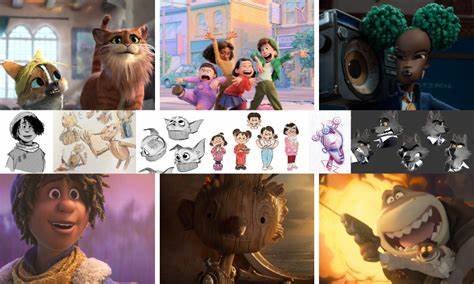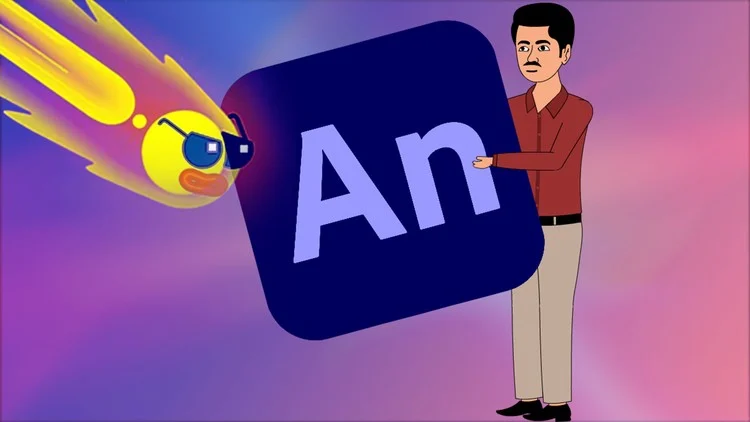Character design is one of the most vital components in the creation of cartoons. A well-designed character can become iconic, representing an entire franchise or series, and forming a lasting connection with viewers. Whether it’s the exaggerated features of a cartoon villain or the expressive traits of a beloved hero, the art of character design shapes how a character resonates with audiences. Let’s explore how character design is executed in cartoons and why it plays such a crucial role in animation.
1. The Foundations of Character Design
The foundation of character design begins with understanding the personality and role of the character within the cartoon. A character’s design should visually communicate their traits—whether it’s a villain’s sharp, angular features or a hero’s rounded, friendly shape. Artists consider aspects such as size, color, posture, and clothing to express these traits. A character’s silhouette is also essential, as it needs to be distinctive enough to be recognized even in a simple outline.
For instance, the curvaceous design of Mickey Mouse gives him a friendly, approachable appearance, while the more angular and exaggerated features of Donald Duck convey his feisty and comical nature. This immediately makes it clear to viewers what kind of character they are dealing with.
2. Exaggeration and Simplification in Cartoons
One of the hallmarks of cartoon character design is the use of exaggeration. Characters in cartoons are often designed with features that are more pronounced than in real life. This exaggeration helps convey emotion and action more clearly, as well as heightens the humor or drama in any scene.
For example, Bugs Bunny’s large ears and wide grin exaggerate his confident, witty persona. Similarly, characters like Popeye are given oversized muscles, emphasizing their strength and unique abilities. However, while the design is exaggerated, it’s also simplified. Cartoon characters tend to have simple shapes and easy-to-read expressions to make them visually accessible to audiences of all ages.
3. Color and Symbolism in Design
Color plays an important role in character design. It’s often used symbolically to reflect a character’s personality or role in the story. Bright colors like yellow and red often represent positive, energetic characters, while darker colors like black or grey might suggest villainy, mystery, or evil.
For example, the Powerpuff Girls are each given a specific color (blue, green, and pink), which not only differentiates them but also symbolizes their individual traits—strength, intelligence, and kindness. In contrast, Shrek, a character with a more muted, greenish skin tone, reflects his misfit status, which works in tandem with his “ugly duckling turned hero” arc.
4. Facial Expressions and Emotion
A character’s face is the primary vehicle for conveying emotions, and cartoon character designers put a lot of thought into how expressions are communicated. Exaggerated facial features, like big eyes, large mouths, and exaggerated eyebrows, make it easier for audiences to immediately understand what a character is feeling, even without words.
The ability to convey emotion through a character’s face can make them relatable, drawing the audience into the narrative. For example, SpongeBob SquarePants has large, expressive eyes and an ever-present smile that immediately convey his positive and enthusiastic personality. In contrast, a character like Squidward Tentacles has slanted eyes and a perpetual frown, emphasizing his sarcastic and often grouchy demeanor.

5. Personality Through Clothing and Accessories
A character’s attire also plays a significant role in revealing their personality and background. Characters are often designed with clothing that reflects their role in the story, status, or cultural background. The right clothing can also hint at their role within the narrative.
Take Velma Dinkley from Scooby-Doo—her orange turtleneck and glasses convey intelligence and a nerdy, practical personality. In contrast, characters like Batman are often clothed in sleek, dark costumes that enhance their mysterious, formidable persona. Accessories like Superman’s cape or Wonder Woman’s lasso become part of their iconic identity, creating additional visual cues for their superpowers or personality traits.
6. Cultural Influences in Character Design
Cartoon characters are often influenced by the culture in which they are created. Whether it’s American, Japanese, or European animation, character designs reflect cultural values, humor, and aesthetics. For example, anime characters are often designed with large, expressive eyes, which reflect the importance of emotional expression in Japanese culture. On the other hand, American cartoons, like The Simpsons, employ a more minimalist, simplified design that matches the show’s satirical tone.
7. Character Evolution
Over time, characters often evolve to adapt to cultural shifts, audience preferences, or storytelling needs. For example, Mickey Mouse’s design has changed over the decades, with his appearance becoming more polished and refined while still retaining the original charm. Character evolution is essential for keeping a character relevant and relatable, while also maintaining the visual identity that fans recognize.
8. The Role of Character Design in Storytelling
Character design isn’t just about aesthetics; it also plays a role in storytelling. The way a character is designed helps establish their narrative arc. A character who starts off as small, timid, or underdog in design might undergo a transformation to reflect their personal growth or power. Think of how Sailor Moon transforms from a clumsy, average girl to a powerful, confident heroine—her design becomes more dynamic as her character evolves.
Similarly, the design of a villain or antagonist is crucial in helping the audience understand their role in the story. The sharp features of Dr. Doom or the menacing smile of Joker immediately convey their nefarious intentions, creating a visual contrast with the more rounded and friendly designs of the heroes.
Conclusion
The art of character design in cartoons is a dynamic and multifaceted process that combines creativity, psychology, and visual storytelling. Great character designs not only make characters memorable but also communicate key aspects of their personality and role within the story. Whether it’s through exaggerated features, color choices, or symbolic accessories, character design is central to making cartoons engaging and timeless.











